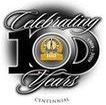 |
Spatial Data Mining and Modeling for Visualisation of Rapid Urbanisation |
 |
| Abstract | Introduction | Methods | Study area and Data | Results and Discussions | Conclusion | Acknowledgement | References | Home |
Introduction Urbanisation is a form of metropolitan growth in response to incomprehensible combination of economic, social, and political forces and to the physical geography of an area. This could be planned (in the form of townships) or unplanned (organic). Many organic cities are now undergoing redevelopment for economic purposes with new roads, infrastructure improvements, etc. It results in the increase in population, in proportion to the region's rural population. This phenomenona is very rapid in India with urban population growing at around 2.3 percent per annum. The 21st century is witnessing "rapid urbanisation of the world’s population", as the global proportion of urban population rose dramatically from 13% (220 million in 1900) to 29% (732 million, in 1950) to 49% (3.2 billion, in 2005) and is projected to rise to 60% (4.9 billion) by 2030 [1]. An increased urban population and growth in urban areas is inadvertent with dramatic increase in population mainly due to migration. There are 35 urban agglomerations/cities having a population of more than one million in India (in 2001). Of the 4000 plus urban agglomerations, about 38 percent reside in just 35 urban areas, thus indicating the magnitude of urbanisation. Overall rise in population of urban poor or increase in travel times owing to congestion in road networks are indicators of urban governance and planning. As Indian cities continue to urbanise, the land use (LU) plays a determining role in the quality of land, water and air environment. This pose serious challenges to the decision makers in the city planning and management process involving plethora of issues like infrastructure development, traffic congestion, and basic amenities (such as electricity, water, and sanitation), floods, heat island, loss of aquatic eco-system, carbon footprint, enhanced level of pollution, higher instances of diseases, etc. [2]. Thus, the administration at all levels: local bodies, federal and national governments are facing the brunt of rapid urban growth. It is imperative for planning and governance to facilitate, augment and service the requisite infrastructure over time systematically. This requires an understanding of landscape characterisation focusing on agents of urban dynamics. Problem Statement – Identifying, delineating and mapping landscapes on temporal scale provide an opportunity to monitor the changes, which is important for natural resource management and sustainable planning activities. Multi-source, multi-sensor, multi-temporal, multi-frequency or multi-polarization remote sensing (RS) data [3] with pattern recognition techniques [4] aid in capturing the dynamics. Pattern classification and modeling are very useful in landscape characterisation for addressing the problems of sprawling cities and urban management. The objectives of this work are to understand the landscape dynamics in Greater Bangalore through visualization by i) modeling impervious surface, ii) computation of forest fragmentation indices, iii) quantification and categorisation of urban changes and (iv) modeling of urban dynamics. Visuaisation - Current Trend and Techniques: Geovisualisation helps to explore real-world environments and model ‘what if’ scenarios based on spatio-temporal data. This aids as a tool for modeling the environmental interests in policy planning. Some of the well known applications are 3D photorealistic representations to simulate urban redevelopment and possible pollution diffusion over the next few years. Techniques used in geovisualisation are agent based cellular automata models, genetic algorithms, etc. |